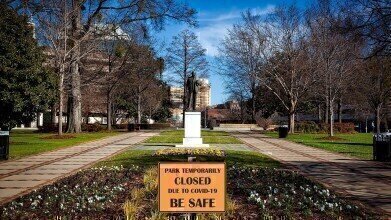Air Clean Up
Why Didn't Pollution Drop As Much in the Second Lockdown?
Feb 22 2021
Concentrations of air pollution have remained relatively high during the second lockdown period in comparison to the first, it has been revealed. A study commissioned by the Financial Times has analysed air quality in the first full week of November 2020, compared to the same period in 2019 and the first week of lockdown restrictions in March.
Their findings show that while most contaminants have declined in concentration after the imposition of a second quarantine period, the drop-off has been nowhere near as significant as in spring. Meanwhile, some cities even showed an increase on pollution levels compared to normal averages. The reason for the discrepancy is thought to lie with the fact that vehicular traffic has maintained relatively stable even during the second lockdown.
A marked difference
During the first wave of restrictions put in place during March, April and May, one of the most noticeable environmental implications of coronavirus was the impact that lockdown had on air quality. With entire industries coming to a standstill, the majority of people working from home and roads across the world free from vehicular traffic, emissions nosedived. Major pollutants fell by 50% or more in many European cities, including in London, where nitrogen dioxide (NO2) and carbon dioxide (CO2) emissions dropped by 74% and 52%, respectively.
However, the changes haven’t been quite so pronounced this time around. Although some European metropoles like London, Madrid and Rome have seen traffic levels around a third of their average, the drop-off in emissions hasn’t been as remarkable. Indeed, in some places like Madrid, NO2 levels in early November were actually 46% higher than they normally are at that time of the year, most likely due to the fact that the Spanish capital is experiencing a curfew, rather than a full-scale lockdown.
Passenger vehicles to blame
The reason for the relatively stable level of pollutants during the second lockdown is thought to be related to patterns of vehicle use. While air quality at construction works and demolitions remained fairly low due to industry being paused, tailpipe emissions did not experience a similar reduction. That’s because many people have seen public transport as an incubator for the disease and so have favoured their own transportation to get around, with NO2 levels – a direct product of diesel-powered cars, vans and lorries – particularly resilient during Lockdown 2.0.
“In the second lockdown the effect on carbon dioxide has been much less — about half the effect we had initially [during first lockdown],”. explained Corinne Le Quere, a professor of climate science at the University of East Anglia in the UK and a prominent expert on the subject of emissions during the pandemic. “This is directly related to the amount of miles travelled through the car, and how much the economy is paralysed.”
Events
May 05 2024 Seville, Spain
May 13 2024 Munich, Germany
May 23 2024 Beijing, China
May 23 2024 Beijing, China
Jun 10 2024 Algiers, Algeria














